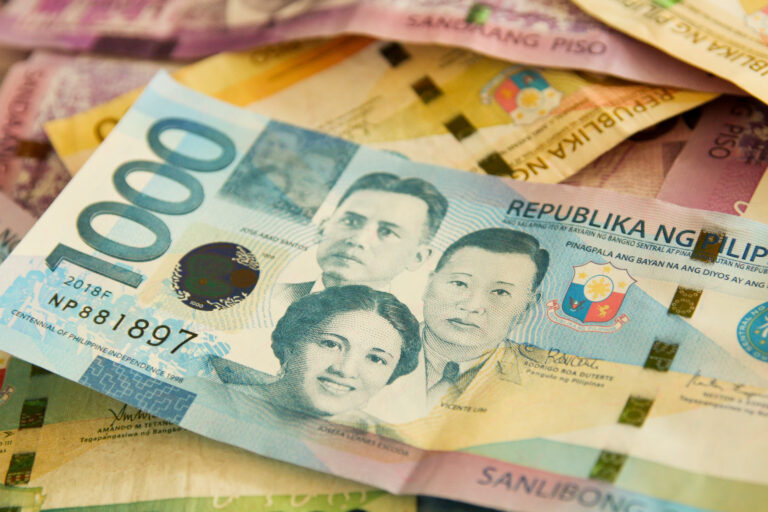Are you curious about the Philippine peso and its role in shaping the vibrant economy of the Philippines? Whether you’re planning to visit the country, send money to loved ones, or simply expand your financial knowledge, understanding the peso is essential.
This guide will cover everything you need to know about the Philippine peso, from its history to how it impacts everyday life. By the end of this blog, you’ll feel well-informed and confident about navigating this currency.
What Is the Philippine Peso?
The Philippine peso (₱), often abbreviated as PHP, is the official currency of the Philippines. It is used in all financial transactions within the country, from buying groceries to large-scale business dealings. The symbol “₱” is widely recognized and represents the country’s robust and evolving economy.
The peso is issued and managed by the Bangko Sentral ng Pilipinas (BSP), the country’s central bank. It plays a vital role in the daily lives of Filipinos at home and abroad, particularly for international remittances from overseas Filipino workers (OFWs).
A Brief Look at the History of the Philippine Peso
Early Origins and Influence
The peso’s history dates back to the Spanish colonial era. Introduced in the Philippines during this period, the currency was heavily influenced by Spanish monetary systems. The word “peso” itself means “weight” in Spanish, a nod to its origins as a unit of weight for precious metals.
Transition to the Modern Peso
The modern peso, as we know it today, came into existence after the Philippines’ independence in 1946. Since then, it has undergone various changes, including redesigns of coins and banknotes to reflect Filipino culture, heroes, and landmarks.
Today, the Philippine peso not only represents the country’s identity but also serves as a key driver in its economic growth and global trade partnerships.
The Role of the Philippine Peso in Everyday Life
For Filipinos, the peso is much more than just a currency; it is a tool that connects them to essential goods, services, and even loved ones abroad. Here’s how the peso is central to everyday life in the Philippines and beyond.
1. Domestic Transactions
The peso is accepted nationwide for all types of transactions, whether you’re paying for a jeepney ride or purchasing fresh tropical fruits at a local market.
2. International Remittances
The peso plays a crucial role in the lives of millions of families who receive remittances from OFWs. These remittances are often converted into pesos to cover daily expenses, education, and savings.
3. Regional and Global Trade
The peso is also vital to the Philippines’ regional and global trade agreements. Its value against other currencies impacts import and export activities, influencing the overall economy.
Key Factors Affecting the Value of the Philippine Peso
Just like any other currency, the value of the peso fluctuates based on several economic and global factors. It’s crucial to understand these influences, especially when sending or exchanging money.
1. Inflation
Inflation rates directly affect the purchasing power of the peso. Higher inflation can reduce the peso’s value, making it less effective for buying goods and services.
2. Foreign Exchange (Forex) Markets
The peso’s value is largely determined by its exchange rate with other currencies. International demand and supply for pesos influence its strength in global markets.
3. Remittances from OFWs
Remittances contribute significantly to the Philippine economy, supporting the peso’s stability and value by boosting foreign reserves.
4. Government Policies
The Bangko Sentral ng Pilipinas implements policies to regulate interest rates and control inflation, both of which indirectly impact the peso’s value.
Tips for Managing Your Money in Philippine Pesos
Whether you’re exchanging foreign currencies into pesos or managing your daily expenses, these tips will help you handle the currency confidently.
1. Monitor Exchange Rates
Keep an eye on foreign exchange rates, especially if you’re sending or receiving funds internationally. Understanding when to exchange currencies can help you save money.
2. Stay Informed About Banknotes and Coins
The BSP regularly updates the design and security features of peso bills and coins. Familiarize yourself with these updates to avoid counterfeit money.
3. Use Digital Payment Systems
Digital wallets and payment platforms, such as GCash and PayMaya, are gaining traction in the Philippines. They offer a convenient way to transact in pesos without handling cash.
4. Save on Remittance Fees
If you’re sending money to the Philippines, look for remittance services that offer competitive exchange rates and low fees. Reliable platforms like Remitly provide transparent costs and fast delivery options, so your pesos go further.
Why the Philippine Peso is Crucial in the Age of Remittances
For a country with over 2 million OFWs worldwide, the peso serves not just as currency but as a lifeline that allows families to thrive back home. Every remittance contributes to the local economy, strengthens the peso, and supports communities in need. That makes understanding and using the peso wisely even more important.
Maximize the Value of Your Pesos with Ease
The Philippine peso is a symbol of the nation’s identity, resilience, and economic progress. Whether you’re a local or someone sending money from abroad, understanding the peso can make a significant difference in your financial decisions.
Looking for a way to maximize every peso? Remitly makes sending money to the Philippines easy, secure, and fast. Sign up for free today and benefit from competitive exchange rates and low fees.
